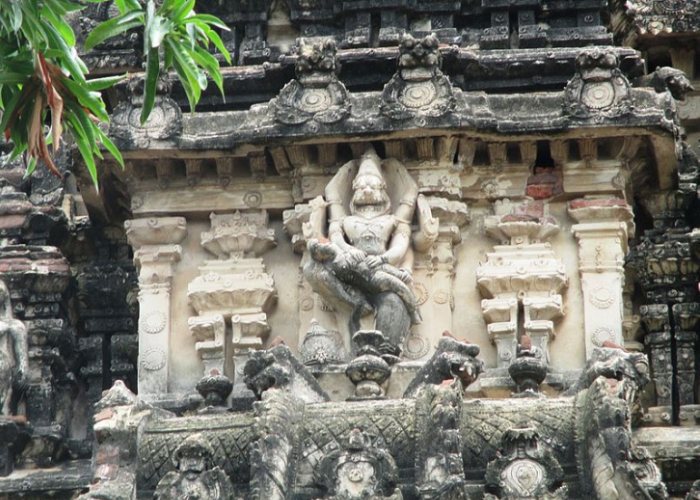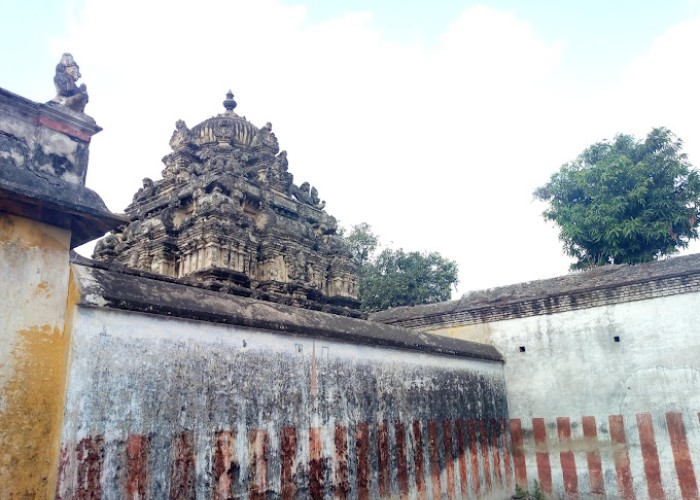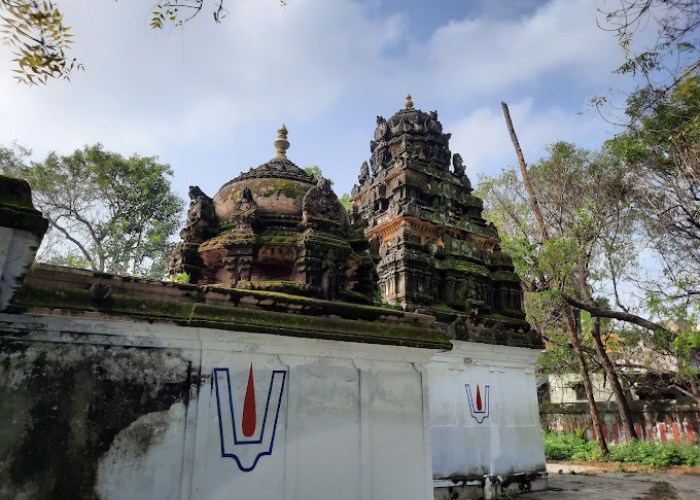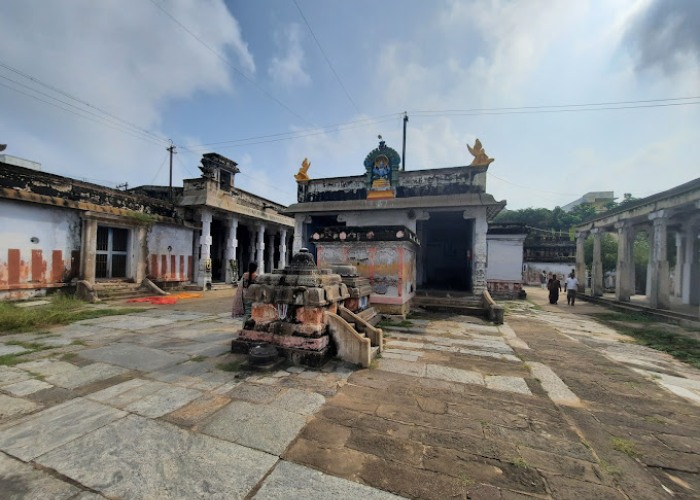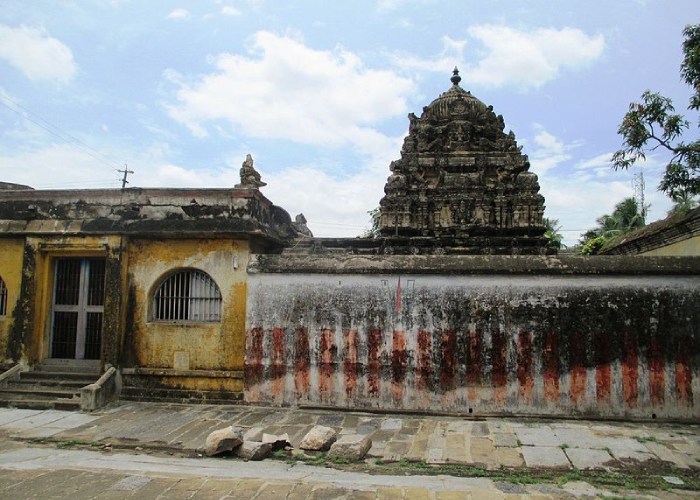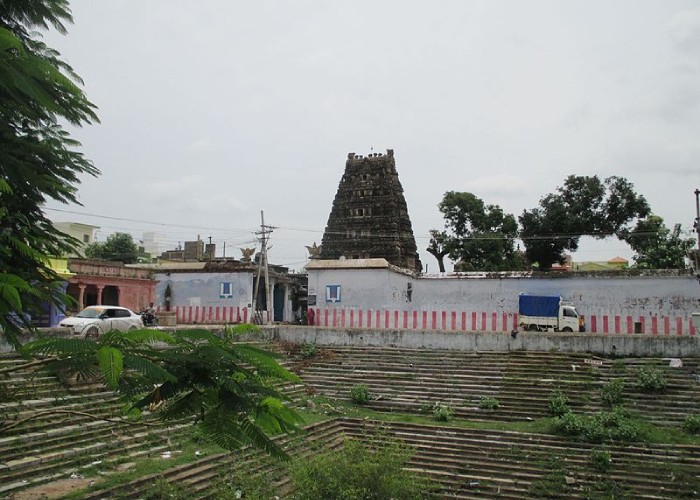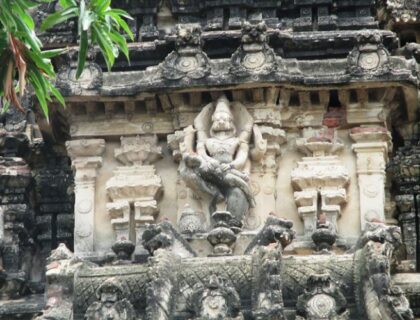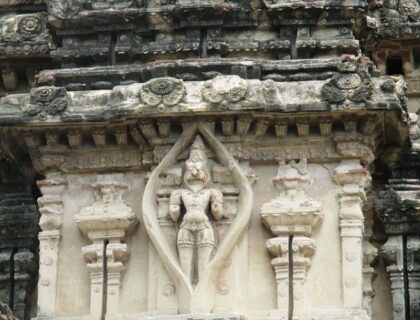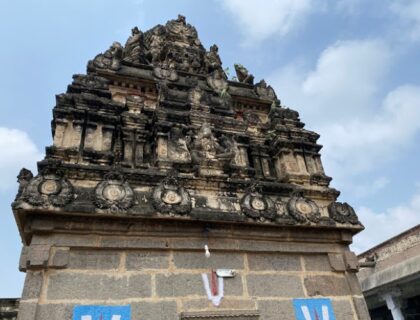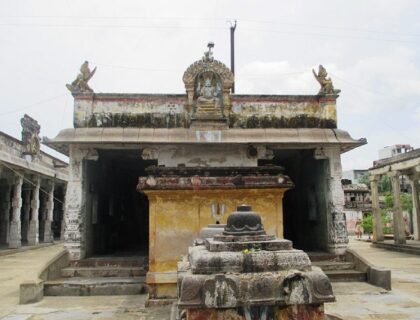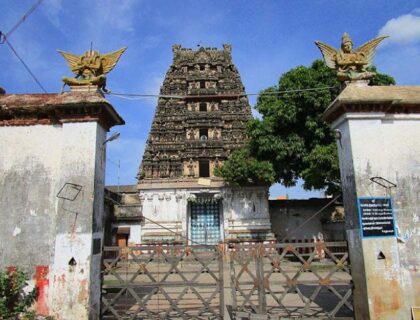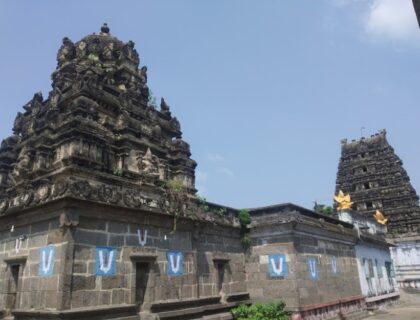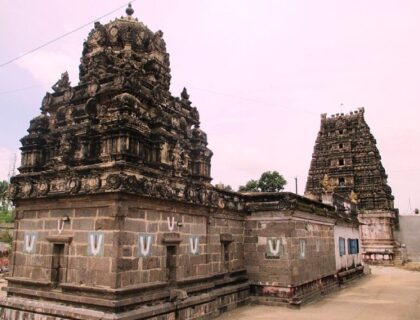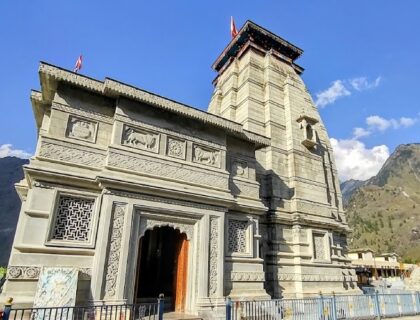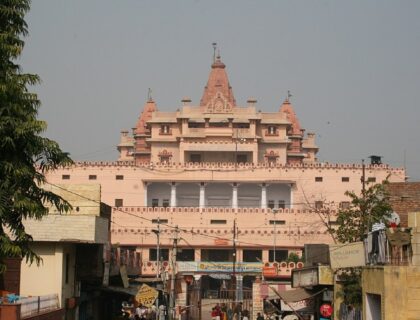Pavalavannam Temple
Pavalavannam Temple or Pavalavanna Perumal is Lord Vishnu’s temple located in Kanchipuram, Tamil Nadu. This temple is among 108 Divya Desams, and it has been praised in the hymns of the Azhwar saints Peyazhwar, Thirumalisai Azhwar, and Thirumangai Azhwar, and it is thus included in the Nalayira Divya Prabhandam compositions.
Pavalavannam Temple or Pavalavanna Perumal is the name given to Vishnu here, and Pavazhavalli is his consort. In this shrine, Lord Pavalavannam is said to have appeared to sage Naimisaranya. This is one of Kanchipuram’s most important temples, with a large number of devotees. The temple is mentioned in the Divya Prabandha, an early mediaeval Tamil canon of Azhwar saints from the 6th to the 9th centuries AD. Pavalavannar Perumal represents Lord Vishnu, while Pavazhavalli represents his consort Lakshmi.
Story/Legend of the Pavalavannam Temple
According to the traditional folklore of this temple, Vishnu took many colours during different eras based on the nature of living creatures and their behaviour. During the Satya Yuga, people were well-behaved (satvaguna), and Vishnu was white (svetavarna). During the Treta Yuga, he took on the colour pavalam (emerald) and therefore became known as Pavalavannar or Pralavannar (in Sanskrit). He took on the colour green (pachai in Tamil) during the Dvapara Yuga.
In the current Kali Yuga, he took a blue tint known as syamalavarna, and it is thought that the shape Vishnu appears will have no effect on mankind. Vishnu is thought to have emerged as Pavalavannar for twin Ashvini twins and hence retains the moniker in present times.
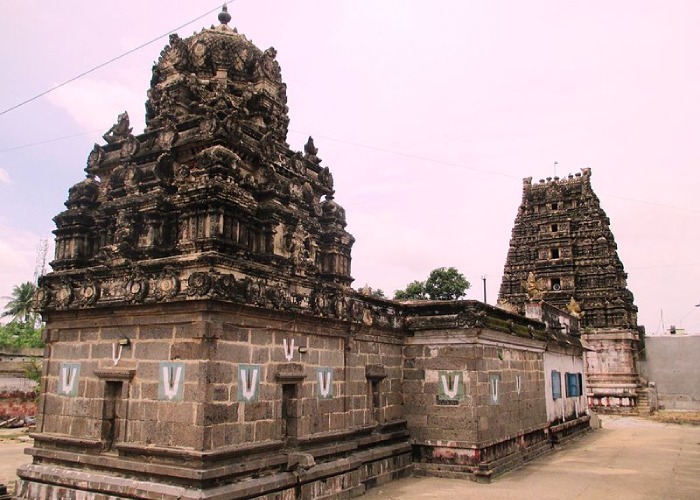
According to another legend, Saraswati, the Goddess of Knowledge, once attempted to thwart her husband Brahma’s penance by sending an army of demons to assault him. However, Vishnu defended Brahma from the onslaught and was covered with blood or blood red colour as a result. This is also thought to have influenced the names Pravalesa in Sanskrit and Pavalavannar in Tamil. Since then, Lord Vishnu has been adored as Pavalvannam, the Emerald Lord. This temple is considered one of the 108 Divya Desams.
What is Divya Desams– A Divya Desam or Vaishnava Divya Desam is one of the 108 Vishnu and Lakshmi temples recorded by the Alvars, the poet-saints of the Sri Vaishnava faith. 105 of the 108 temples are in India, one is in Nepal, and the final two are thought to be in space, in Tirupparkatal and Vaikuntham. They are distributed over the Indian states of Tamil Nadu (84), Kerala (11), Andhra Pradesh (2), Gujarat (1), Uttar Pradesh (4), and Uttarakhand (3). Muktinath, Saligramam is Nepal’s sole Divya Desam. The 12 Alvars respect the Divya Desams in the Naalayira Divya Prabandham, a collection of 4,000 Tamil hymns.
History of Pavalavannam Temple
The temple contains inscriptions from the Chola (10th-12th century) and Vijayanagara (15th-16th century) periods. The temple was previously thought to have been built during the Mediaeval Chola dynasty. The temple was maintained and controlled by hereditary trustees in contemporary times, but a 2014 dispute from the Chennai High Court split control between the trustee and the Hindu Religious and Endowment Board of the Government of Tamil Nadu.
Three of the 12 Alvars (the poet-saints of the Sri Vaishnava tradition) have sung on the various forms of God in this temple: Peyalvar, Thirumalisai Alvar, and Thirumangai Alvar. Many Acharyas have also written hymns in this Temple about the different forms of God. The temple is oriented westward.

According to another story, sage Bhrigu was performing penance and wanted to know which of the three gods, Brahma, Vishnu, and Shiva, would be the most tolerant when their patience was tried. Vishnu was the most accommodating of the three, going on to massage his legs for pain alleviation despite the sage kicking him. The sage was embarrassed by his actions, but Vishnu instructed him to go to Kanchipuram to complete his penance. Vishnu appeared to the sage as Pavalavannar. Inside the sanctuary, the figure of the sage is seen in a worshipping posture.
The architecture of Pavalavannam Temple
The primary shrine of the temple features a standing image of the presiding god, Pavalavannar. Inside the sanctum are the festive images of the presiding god and Santhanagopala Krishnan. The flagstaff-topped, pillared halls, Mahamandapam and Ardhamandapam, lead to the west-facing sanctuary. The sanctum’s roof is known as Vedasara Vimana, and it features five kalasams and stucco depictions of numerous legends.
Separate shrines for Alvars can be found to the north of the flagstaff at the temple. The hall’s pillars are sculpted with depictions of Nammalvar, Ramanujar, Manavala Mamunigal, and other Vishnu avatars and tales. Along with Sita, Hanuman, and Garuda, there are other Rama shrines.

Vedasara Vimana is the name of the major shrine’s vimana. Pavalavalli’s shrine, Pavalavannar’s consort, is positioned on the temple’s eastern side, facing the major shrine. The temple is divided into two precincts, the second of which is surrounded by granite walls pierced by a five-tiered raja gopuram (gateway tower). The gopuram is adorned with plaster pictures of numerous legends, the most renowned of which is a depiction of Narasimha, an avatar of Vishnu, fighting the demon Hiranya. To the left of the gopuram from the entry is a temple dedicated to Manavala Mamunigal. Chakra Theertham, the temple tank, is located to the northeast of the entrance.
Facts about Pavalavannam Temple
- Pavalavannam temple, also known as Tiru Pavala Vannam, is a Hindu temple devoted to the Hindu god Vishnu and one of the 108 Divyadesam dedicated to Lord Vishnu.
- This lovely and historic temple was established during the Chola period, with minor changes made during the reign of the Vijayanagar dynasty.
- The temple is classified as a Divya Desam, one of the 108 Vishnu temples that are mentioned in the book.
- The Cholas are thought to have built the temple, with additional contributions from Mediaeval Cholas and Vijayanagara rulers.
- The temple’s walls bear three inscriptions, two from the reign of Kulothunga Chola I (1070-1120 CE) and one from the reign of Rajadhiraja Chola (1018-54 CE).
- A granite wall surrounds the temple, enclosing all the shrines and two bodies of water. There is a seven-tiered raja gopuram, the temple’s gateway tower, in the temple.
- In the current Kali Yuga, Lord Pavalavannam is thought to be the final path to salvation. He can deliver people from the ills of this age of rage, hatred, deception, and deceit.
- It is also believed that worshipping him will keep evil forces at bay, erase the negative effects of the snake planets Rahu and Ketu, protect children, and help devotees live a peaceful and contented life.
Famous Festivals In Pavalavannam Temple
- Brahmmotsavam is the major festival celebrated in the temple.
- Chitra Poornima is also a major occasion for celebration in the temple.
- Vaikuntha Ekadashi – Vaikuntha Ekadashi celebrated during the Tamil month of Margazhi (December–January) is the major festival celebrated in the temple.
- Pavitrotsavam is celebrated during the Tamil month of Panguni (March – April)
How to reach Pavalavannam Temple
Pavalavannam Temple is a Vishnu temple located in the ancient town of Kanchipuram, in the state of Tamil Nadu.
By Air: The nearest airport is Chennai International Airport, which is located about 80 km from the temple.
By Railway: The nearest railway station is the Kanchipuram Railway Station, which is about 3 km away from the temple.
By Roadways: The temple is located in the heart of the city, and there are several buses and taxis available to reach the temple.
Also Read – Yathothkari Perumal Temple
Support Us
If our content helps you even 1% in gaining information about the temple, please support us by contributing any amount, our UPI ID is - q417999792@ybl Or pay using QR CODE >>> Click Now
Location
Facilities
- Drinking Water
- Pooja Item Shops
- Prasad Shops
- Restaurants Nearby
- Resting Room

